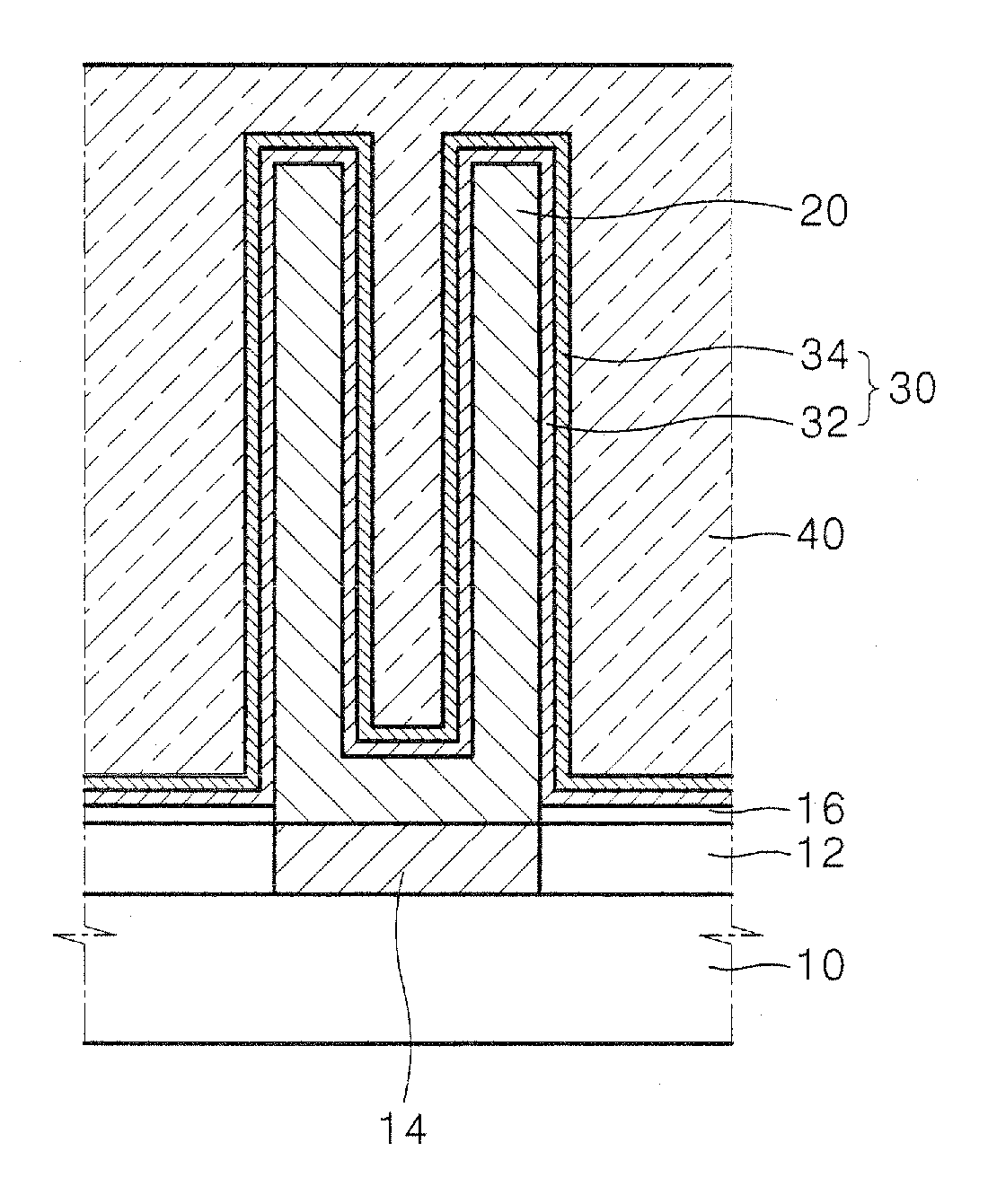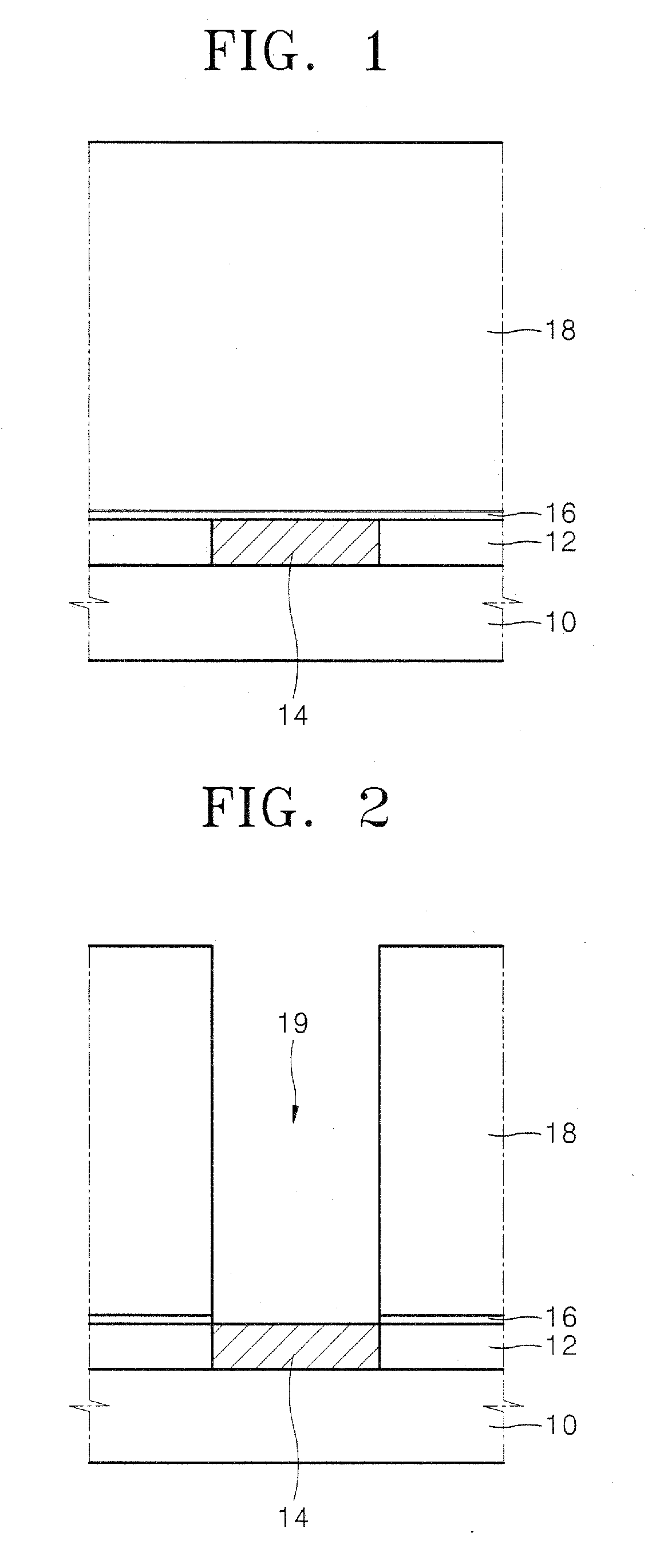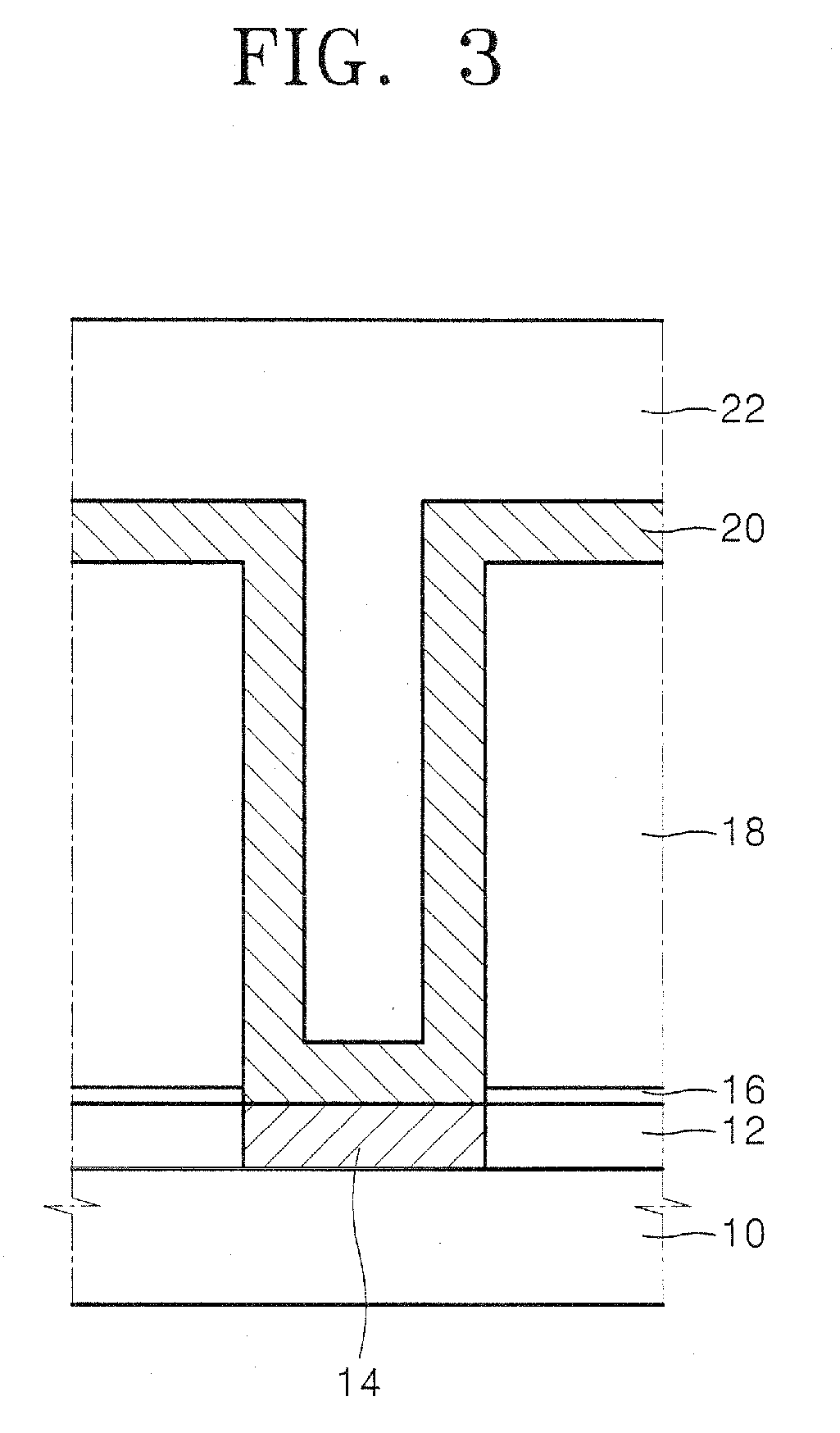Method of fabricating metal-insulator-metal capacitor
a technology of metal-insulator and capacitor, which is applied in the direction of capacitors, basic electric elements, electrical equipment, etc., can solve the problems of deteriorating semiconductor device characteristics, the limit of the scaled-down dielectric layer in the high integration dram device, etc., and achieve the effect of improving electrical characteristics
- Summary
- Abstract
- Description
- Claims
- Application Information
AI Technical Summary
Benefits of technology
Problems solved by technology
Method used
Image
Examples
experimental example 1
[0031] In order to examine the characteristics of the capacitor fabricated according to an embodiment of the present invention, in which an oxide hafnium dielectric layer and an oxide aluminum dielectric layer is formed, the leakage current characteristics of the MIM capacitor in accordance with the order formation of the dielectric layers is evaluated.
[0032] In the fabrication of the MIM capacitor according to this example, a 20 Å thick oxide hafnium dielectric layer is formed on a TiN lower electrode, a 40 Å thick oxide aluminum dielectric layer is formed on the oxide hafnium dielectric layer, and an upper electrode composed of TiN is formed on the resulting structure. The upper and lower electrodes are formed at a temperature of about 560° C. using an ALD method. The dielectric layers are deposited at a temperature of about 350° C. using an ALD method, in which O3 is used as an oxygen source gas. In a comparative example, upper and lower electrodes can be formed in the same mann...
experimental example 2
[0035] In this example, a MIM capacitor was fabricated by varying the thickness of an oxide hafnium dielectric layer in a same range of an equivalent oxide dielectric layer thickness and the leakage current characteristic of the MIM capacitor was evaluated.
[0036] The MIM capacitor of the present invention was fabricated in the same manner as that of the experiment example 1, in which an oxide hafnium dielectric layer of the MIM capacitor was formed with thicknesses of 20 Å, 40 Å, 45 Å, and 50 Å, respectively. An equivalent oxide dielectric layer thickness of 20 Å was used in order to compare the leakage current characteristics of the capacitor in a same range of an equivalent oxide dielectric layer thickness. Therefore, an oxide aluminum dielectric layer was formed with thicknesses of 32 Å, 24 Å, 22 Å, and 20 Å, respectively, which were achieved by subtracting a thickness of the oxide hafnium dielectric layer from the composite dielectric layer thickness corresponding to an equival...
experimental example 3
[0039] An oxide aluminum dielectric layer was deposited on an oxide hafnium dielectric layer, and the leakage current characteristics of a MIM capacitor were evaluated in accordance with the deposition temperature.
[0040] The MIM capacitor of the present invention was fabricated in the same manner as with experimental example 1, but the deposition temperature of the oxide aluminum dielectric layer was set to vary between about 300° C. and about 450° C.
[0041] Results of measuring a leakage current amount per cell of the semiconductor substrate in accordance with voltages applied to the capacitor are illustrated in FIG. 11. The deposition temperature of the capacitor represented by ‘g’ was set to about 450° C., and a deposition temperature of the capacitor represented by ‘h’ was set to about 300° C. In FIG. 11, it was acknowledged that the capacitor of ‘g’ showed less leakage current than the capacitor of ‘h’ at about 1.2 V. Hence, the leakage current of the MIM capacitor of the pres...
PUM
 Login to View More
Login to View More Abstract
Description
Claims
Application Information
 Login to View More
Login to View More - R&D
- Intellectual Property
- Life Sciences
- Materials
- Tech Scout
- Unparalleled Data Quality
- Higher Quality Content
- 60% Fewer Hallucinations
Browse by: Latest US Patents, China's latest patents, Technical Efficacy Thesaurus, Application Domain, Technology Topic, Popular Technical Reports.
© 2025 PatSnap. All rights reserved.Legal|Privacy policy|Modern Slavery Act Transparency Statement|Sitemap|About US| Contact US: help@patsnap.com



